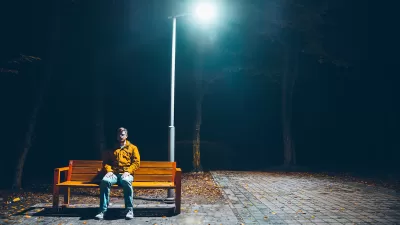An overview of how urbanists in California have shifted their thinking about repairing urban cores. The article is by Howard Blackson III, an urban designer.
With crumbling streets and bridges and empty buildings lacking funding for renovation, cities are finally learning a tough lesson about the economic risks of letting infrastructure deteriorate.
Howard M. Blackson III, an urban designer, opines that too much emphasis has been put on suburban sprawl, but attitudes are changing.
“Our most recent generation is rejecting their parent’s suburban lifestyle and the well-known social and health issues these placeless-places churn out. The 21st century is witness to the theoretical end to the historically devastating Urban Renewal policies and programs formulated during the mid-century modernist era.”
Instead of calling on deteriorating structures to be razed, urban planners and developers in the post-redevelopment era are pushing to repurpose them, according to Blackson. The talk around urbanism is focused more on designing with a community’s unique character in mind, he added.
“After 30 years of New Urbanists making the argument for nurturing and cultivating our historical building fabric, this more pragmatic role of stewardship is now being directed towards our city’s infrastructure. This shift from relying on singular 'level of service' measurements towards a more localized expectation for holistic 'place making' is deeply resonating with Americans.”
FULL STORY: One Block at a Time…

Planetizen Federal Action Tracker
A weekly monitor of how Trump’s orders and actions are impacting planners and planning in America.

Restaurant Patios Were a Pandemic Win — Why Were They so Hard to Keep?
Social distancing requirements and changes in travel patterns prompted cities to pilot new uses for street and sidewalk space. Then it got complicated.

Map: Where Senate Republicans Want to Sell Your Public Lands
For public land advocates, the Senate Republicans’ proposal to sell millions of acres of public land in the West is “the biggest fight of their careers.”

Maui's Vacation Rental Debate Turns Ugly
Verbal attacks, misinformation campaigns and fistfights plague a high-stakes debate to convert thousands of vacation rentals into long-term housing.

San Francisco Suspends Traffic Calming Amidst Record Deaths
Citing “a challenging fiscal landscape,” the city will cease the program on the heels of 42 traffic deaths, including 24 pedestrians.

California Homeless Arrests, Citations Spike After Ruling
An investigation reveals that anti-homeless actions increased up to 500% after Grants Pass v. Johnson — even in cities claiming no policy change.
Urban Design for Planners 1: Software Tools
This six-course series explores essential urban design concepts using open source software and equips planners with the tools they need to participate fully in the urban design process.
Planning for Universal Design
Learn the tools for implementing Universal Design in planning regulations.
Heyer Gruel & Associates PA
JM Goldson LLC
Custer County Colorado
City of Camden Redevelopment Agency
City of Astoria
Transportation Research & Education Center (TREC) at Portland State University
Camden Redevelopment Agency
City of Claremont
Municipality of Princeton (NJ)




























